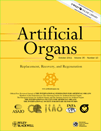Veno-Venous Extracorporeal Membrane Oxygenation as a Bridge to and Support for Pulmonary Thromboendarterectomy in Misdiagnosed Chronic Thromboembolic Pulmonary Hypertension
Abstract
Diagnostic delay in patients suffering massive pulmonary embolism (PE) on chronic thromboembolic pulmonary hypertension (CTEPH) has inevitably fatal consequences. Indications to pulmonary thromboendarterectomy (PTE) and extracorporeal membrane oxygenation (ECMO) are limited by severe comorbid conditions, some of which, as neurologic disease, absolutely contraindicate these procedures. We reported the clinical course of a severely diseased patient with a history of meningitis, psychosis and epilepsy, experiencing acute massive pulmonary embolism complicated by acute respiratory failure, successfully treated by ECMO and PTE. A 51-year-old woman with massive PE complicating a misdiagnosed CTEPH needed mechanical ventilation because of acute respiratory insufficiency. Thoracic computed tomography (CT) scan demonstrated PE, and brain CT showed multiple cerebral and cerebellar ischemic lesions. Veno-venous ECMO assistance was instituted despite CT imaging. She recovered from acute respiratory insufficiency by means of veno-venous ECMO. Weaning from ECMO was however impossible until surgical exploration demonstrated an underlying chronic CTEPH, which was successfully addressed by PTE, switching the ECMO system to a standard cardiopulmonary bypass. Postoperative course was uneventful and the patient was discharged home in healthy condition. Despite the fact that the cost-effective ratio should always be considered in advanced life support, expanding the commonly accepted selection criteria for expensive procedures might be advisable in selected acute life-threatening cases, in view of the possibility to unexpectedly save lives.




